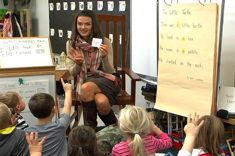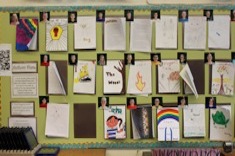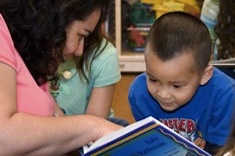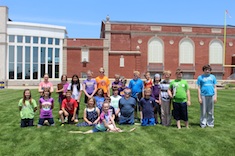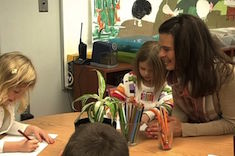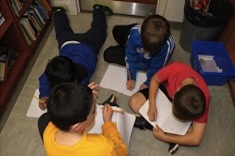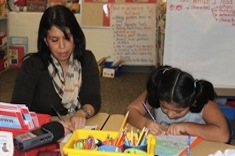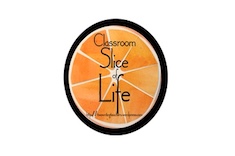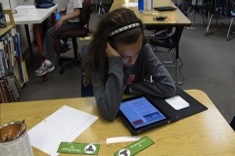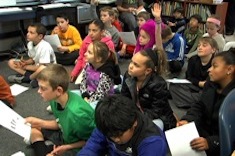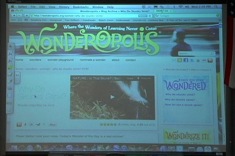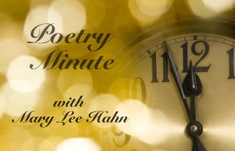Teaching Writing
Everyone who writes for Choice Literacy loves teaching writing, because we all write ourselves. We know it is "hard fun," as Donald Murray famously said—exasperating and exhilarating at the same time. The writing workshops you will read about here and see in our videos are busy, noisy, vibrant places. And most days, we wouldn't want to be anywhere else than in the midst of 'em! Here is where you'll find our latest discoveries, insights, and occasional boneheaded mistakes in teaching writing.
Latest Content
Grateful Journals
Beth Lawson began her own gratitude journal as a troubled teen, and finds that the daily routine of Grateful Journals is a powerful tool for reflection and building community in the intermediate grades.
Adding to a Word Wall in Kindergarten
Mandy Robek introduces a new word to her kindergartners for their word wall.
Conferring with Ben
Franki Sibberson confers with Ben, a fourth-grade writer trying to figure out the best audience for his writing when technology presents many options.
The Cure for Senioritis? Poetry!
There may be a group of students somewhere less eager to learn than a class of high school seniors during the last weeks of school, but that group would be as tough to find as Bigfoot or the Loch Ness monster. Gretchen Schroeder discovers a surprising cure for senioritis —modern poetry.
Conferring with Pierce
Franki Sibberson demonstrates how much ground can be covered in a three-minute conference with a student. She helps fourth grader Pierce think through the audience for his writing, how to add visuals to blog posts, and enlists him to teach others new skills as he acquires them.
Launching a Fiction Writing Unit with Fifth Graders
Katherine Sokolowski finds late in the year is the perfect time for launching a fiction writing unit with her fifth graders.
What Can Charlie Do?: The Value of Response Journals in Preschool Classrooms
Kelly Petrin shares the power of response journals with preschoolers.
13 Ways to Raise Students Who Hate Research
Chris Lehman has tongue-in-cheek suggestions for helping students learn to hate the research process.
Football Field Writing
Katherine Sokolowski adapts an idea from Jim Burke to get her fifth graders outdoors and envisioning their growth over the summer.
Teaching Syllable Breaks in Kindergarten
In kindergarten, table groups are a natural and informal way to help groups of students learn new skills through eavesdropping. In this short video from Mandy Robek's kindergarten class, Mandy targets the same skill of defining syllables during individual conferences at the table so that the learning is reinforced for all.
Using Shared Writing to Build Argument Skills
Shari Frost explains the power of shared writing in intermediate classrooms, especially for struggling learners.
Rehearsing Informational Writing: Conferring with Jocelyn
Stella Villalba confers with first grader Jocelyn about the information text she is writing about bunnies. Jocelyn is an English language learner, and this conference demonstrates the value of oral rehearsal for young ELL writers.
Our Favorite Online Reading and Writing Tools Round-Up (Part 2)
Choice Literacy contributors share favorite online tools. This is the second installment in a two-part series.
Subheading Literacy: Nothing “Sub” About It
Heather Rader discovers subheadings are a neglected but useful tool for teaching students about key topics in their writing.
Cooking Up Interest in Words with Fifth Graders
Maria Caplin continues her series on sparking vocabulary learning, this time highlighting fun activities.
The Lunch Lady and Gender in Reading
Franki Sibberson has her students read a blog post about books written for boys and girls, which begins a fascinating discussion with the class about gender in reading choices.
Slice of Life: Challenging Student Writers
Katherine Sokolowski brings the popular web “slice of life” challenge to her fifth-grade classroom.
Between the Brain and Page: Working with Gifted Student Writers
Michelle Kelly explains how gifted student writers have needs that vary greatly. "Carolyn the Voice," "Alan the Verbose," and "Bailey the Perfectionist" are all gifted writers who need different workshop structures and guidance to do their best work.
10 Principles for Planning Reading Minilessons
Franki Sibberson shares 10 principles for minilesson planning. This is an excerpt from her new book, The Joy of Planning.
Symbiosis: Choice and Structure in Writing Workshops
Ruth Ayres and Heather Rader draw on their work as literacy coaches and teachers to explore the complex connections between choice and structure in writing workshops.
Every Picture Tells a Story
Max Brand describes how he uses images to build reading and writing skills among his kindergartners.
Research IS the Project (Primary Research Series)
Heather Rader blurs the line between research and presentation in the final installment of the primary research series.
Teacher-as-Writing-Model Minilesson in Fourth Grade
Beth Lawson models her process as a writer for her fourth-grade students, describing her emotions as well as creating a draft.
Putting the Search Back in Research
Heather Rader launches a new four-part series on teaching research skills in the primary grades. This first installment highlights search techniques for children.
Science Challenge
Franki Sibberson’s fourth-grade students share results from the weekly science challenge.
Getting More from Wonderopolis
Franki Sibberson uses Wonderopolis with her 4th grade students, helping them learn to research and dig more deeply at the site.
Poetry Minute: Forms and How to Teach Them
Mary Lee Hahn's "Poetry Minute" includes tips and resources for poetry instruction. This month's Poetry Minute focuses on poetry forms and mentor texts to teach them.
Supporting the Transition to Middle School: An Elementary Teacher’s Perspective
Maria Caplin shares how and why she began to collaborate with Gretchen Taylor, a sixth-grade teacher who would soon be the middle school teacher for some of her students.
What Information Is Good Information? Smooth and Effective Transitions to Middle School
Gretchen Taylor explains her role in observing Maria’s fifth-grade classroom, and then building a relationship with students and their families.
Transitions Are Like Underwear
If you tell students transitions are like underwear, they sit up and pay attention. Heather Rader uses the analogy to help students analyze and improve the transitions in their writing.
Browse Content By
Type
Category
- Assessment Tools
- Big Fresh Archives
- Booklists
- Choice Numeracy
- Classroom Design
- Common Core
- Community Building
- Conferring
- Content Literacy
- Digital Literacy
- English Language Learners
- Equity
- Family Relations
- Free Samples
- Guiding Groups
- Leadership
- Literacy Coaches
- Mentor Texts
- Minilessons
- New Teacher Mentors
- Podcasts
- Poetry
- Quote Collections
- Reading Strategies
- Self Care
- Struggling and Striving Learners
- Talking and Listening
- Teacher Study Groups
- Teaching Reading
- Teaching Writing
- Word Study and Vocabulary
Author
- Melissa Quimby
- Nawal Qarooni
- Gwen Blumberg
- Julie Cox
- The Lead Learners
- Hannah Tills
- Josie Stewart
- Ruth Metcalfe
- Mallory Messenger
- Becca Burk
- Jodie Bailey
- Vivian Chen
- Mary Brower
- Tiffany Abbott Fuller
- Stephanie Affinito
- Ruth Ayres
- Leigh Anne Eck
- Heather Fisher
- Shari Frost
- Julie Johnson
- Suzy Kaback
- Gigi McAllister
- Shirl McPhillips
- Melanie Meehan
- Cathy Mere
- Debbie Miller
- Tara Barnett and Kate Mills
- Tammy Mulligan
- Dana Murphy
- Bitsy Parks
- David Pittman
- Brenda Power
- Heather Rader
- Matt Renwick
- Mandy Robek
- Christy Rush-Levine
- Gretchen Schroeder
- Jen Schwanke
- Brian Sepe
- Katherine Sokolowski
- Stella Villalba
- Jennifer Vincent
Grade Level
Choice Literacy Membership
Articles
Get full access to all Choice Literacy article content
Videos
Get full access to all Choice Literacy video content
Courses
Access Choice Literacy course curriculum and training


